by Victor Davis Hanson
Most Americans once were mostly in agreement about what happened on December 7, 1941, 80 years ago this year. But not so much now, given either the neglect of America’s past in the schools or woke revisionism at odds with the truth.
The Pacific war that followed Pearl Harbor was not a result of America egging on the Japanese, not about starting a race war, and not about much other than a confident and cruel Japanese empire falsely assuming that its stronger American rival either would not or could not stop its transoceanic ambitions.
On an early Sunday morning at Pearl Harbor, Hawaii, the Japanese Imperial Navy conducted a tactically successful, but strategically imbecilic, surprise attack on the U.S. 7th Fleet – while at peace and without a declaration of war. The assault – synchronized with subsequent bombing and invasions of the Philippines and British-controlled Malaya, Singapore, and Hong Kong, and some Pacific Islands – did not just ensure an existential Pacific theater war between Japan and America. It also prompted the entry of the United States on December 11 into the European theater of World War II, after both Italy and Nazi Germany first declared war on America. Had the latter not done so, it is arguable that the United States would have instead concentrated on Japan alone and might have knocked it out of the war even earlier.
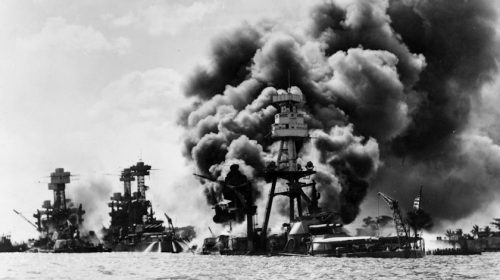
Revisionists often cite conspiracy theories that the Roosevelt Administration lured Japan into the war by previously limiting oil exports to Tokyo (a mere five months before Pearl Harbor) or by foolishly moving the 7th Fleet from San Diego to a deliberately exposed and not so well defended Pearl Harbor.
Such contrarian views fail to persuade because the one-sided source of tensions had been clear to all for a decade. Japan invaded Manchuria in 1931. It resumed its war with China by invading the mainland in 1937. In September 1940, it absorbed French colonial Indochina. The idea of a Japanese Greater East Asia Co-Prosperity Sphere was informally circulating by 1940, as a blueprint of consolidation of the planned Japanese imperial wartime acquisitions of China, and the former British, American, French, and Dutch colonial territories.
The mercantile system was envisioned as a sort of Asian version of a would-be Napoleonic Europe but based on the supposed racial superiority of Japan and the propagandistic and cynical notion that even harsher Japanese imperialism would be less resented by Asians in the Pacific than then current nation-building colonialism of Western powers. Such crude propaganda was never taken too seriously outside of Tokyo, given the Japanese mass civilian killings of conquered Asians in Nanking, China and the massacres that followed from the takeover of Singapore.
Loss of Deterrence
In truth, Western powers had appeased and sold the Japanese war machine all that it required for much of the 1930s. If racism played any role in the increasing tensions, it was mostly the Japanese assumption that its rich, industrialized nation was a natural reflection of innate racial superiority. If Japan chauvinistically exaggerated its power, the allies in turn downplayed the Japanese threat on their own racialist assumptions that any emulator of Western military technology, industrialization, and military organization could never match their creators.
In more realist terms, Japan attacked Pearl Harbor because it could. Its fleet was larger than the American Pacific 7th fleet (though not by any means the entire U.S. Navy). And in many categories of fighter aircraft, torpedoes, and ships, the Japanese Imperial Navy in late 1941 was temporarily superior to that of the Americans.
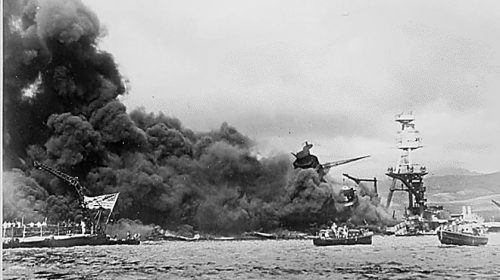
The United States had further lost deterrence in Japanese eyes because it did nothing when its chief allies Britain and France were attacked by Nazi Germany in 1940, the former bombed in autumn 1940 and spring 1941, the latter conquered in seven weeks by the Wehrmacht in May 1940.
More germanely, Japan believed that, with the German army at the time of Pearl Harbor just a few miles from the suburbs of Moscow, the Soviet Union would likely fall within days. Hitler would then be free to consolidate his continental empire and soon vanquish remnants of the once proud allied opposition. In other words, Japan calculated that it might gain credit for the inevitable Axis victory before the war ended, and thus grab what it could before the spoils were fought over and divvied up to others.
Note that the Germans cared little for their de facto allied Japanese concerns when they concluded a nonaggression pact with the Soviet Union in August 1939 – when Japan was fighting a supposedly shared communist Russian enemy on the Mongolian border.
And in turn, the Japanese cared even less for Axis solidarity when they reciprocated by signing their own nonaggression pact with Stalin in April 1941, just weeks before Operation Barbarossa, an agreement that would later persuade the Soviet Union that it no longer needed to worry about a second front on its eastern borders and could focus all its resources on the German invader. After April 1941, Japan assumed that whatever the ensuing relationship between Germany and Russia, it could now concentrate on the Anglo-Americans alone, and primarily with its navy that achieved parity with British and American sea- and airpower.
All these were logical considerations for a belligerent power intent on expanding an already ascendant Asian Empire into the Pacific. But such rationales were still predicated on faulty intelligence, a racist misreading of history, and little knowledge of the American people.
Tokyo had no real appreciation that the United States was already building a second fleet of modern carriers, battleships, cruisers, and submarines that would soon make the American navy larger than all the world’s fleets combined. Indeed, the Americans would launch over 145 aircraft carriers, including over 20 Essex fleet carriers, the most advanced in the world.
Tokyo had no inkling that the anemic Depression-era American economy was capable of rapid expansionary growth. More specifically, the American gross natural product by late 1944 would outpace all five economies of the major combatants – Germany, Italy, Japan, Great Britain, and the Soviet Union – combined.
Ignorance of Innate American Strength
Unlike the Germans, Japanese, or Soviets, the Americans and the British were the only two World War II powers with the global reach, lift, transport, and resources to fight a two-front war successfully. In contrast, Japan would quickly learn that its decade-long presence in China was an open wound that drained off needed resources in its simultaneous wars with the Americans and British.
As far as the December 7 surprise attack itself, it is best seen as the worst of both worlds – conducted expertly enough to ensure damage and thus incur American furor, but not so much as to cripple America’s war-making ability or to frighten the American public into submission.
A powerful Japanese Imperial Navy carrier task force, with an ability to launch some 350-combat aircraft from its six fleet carriers, cruised completely unnoticed some 4,000 miles to Hawaii. That the fleet could steam such a great distance without radio contact, and in rough seas at the near onset of winter, while avoiding all war and merchant ships, revealed real tactical genius.
The operation itself likewise unfolded flawlessly. At sunrise on a Sunday morning two waves of carrier-based torpedo and dive bombers sank five battleships of the U.S. 7th fleet. The attack seriously damaged four others. In a time of peace, the Japanese killed more than 2,300 American sailors and soldiers. Somehow the Japanese fleet safely steamed back to Japan. Losses were minimal: just 29 aircraft, and five small one-man submarines.
Again, if tactically brilliant, the Pearl Harbor attack strategically would prove a colossal disaster for Japan. It failed even to shut down the port at Pearl Harbor, as the Japanese fleet vetoed ideas of critically needed third and fourth air strikes – necessary to destroy U.S. oil storage and repair shops in the Pacific harbor facilities. Within days, Pearl Harbor was receiving 7th Fleet shipping.
More disastrously for the Japanese, the Pacific fleet’s three American aircraft carriers based at Pearl – Enterprise, Lexington, and Saratoga – were out to sea on December 7 and therefore safe. Lexington’s dive bombers would soon help sink a Japanese carrier and damage others just six months later at the Battle of Coral Sea, before itself being lost at the battle. Both Enterprise and Saratoga would fight in several key Pacific battles and survive the war.
As far as the relatively old and slow American battleships of Battleship Row (most were built well before 1920), had their captains received advanced word of the Japanese approach and steamed out to meet the attackers without air cover, American fatalities might have been 10 times higher – given all eight battleships likely would have been sunk on the high seas well before reaching the Japanese fleet.
So, the Japanese incited – but did not seriously injure – the one global power that had the ability not just to defeat them but also to dismantle their distant empire and destroy the Japanese mainland itself.
What If?
Were there more viable strategic alternatives for the war-minded Japanese? Plenty. By 1941, the European colonial presence in the Pacific was mostly either weak or nonexistent. That reality offered the Japanese options to acquire resources without war with the United States.
Both France and the Netherlands had been under occupation by the victorious Germans since June 1940. Had the Japanese simply expanded their newly acquired Indochina concessions – appropriated from the Vichy French in 1940 – grabbed the equally orphaned oil-rich Dutch East Indies, and been content with conquering resource-rich, British-held Malaysia and its fortress port at Singapore – while bypassing Pearl Harbor and the Philippines – there would have been little likelihood even then of the United States entering the conflict.
Instead, the Pearl Harbor attack enraged and woke up the Americans to launch the largest economic and industrial renaissance in history to that time. Just four months after Pearl Harbor, the United States had bombed Tokyo with Jimmy Doolittle’s carrier-based medium bombers. Note that at no time did the Japanese Imperial Navy have the ability to bomb any major U.S. continental city. By August 1942 American forces were on the offensive at Guadalcanal and were already gearing up for a two-pronged island-hopping trajectory to Tokyo.
In contrast to almost immediate December 1941 Anglo-American joint planning, Adolf Hitler was utterly surprised and not consulted about the Japanese attack. Indeed, apparently Hitler had little if any idea where Pearl Harbor was. But he nonetheless soon became delighted at the news, especially given disappointment with the dismal performance of the surface fleet of the Kreigemarine.
Nazi Germany naïvely assumed that Japan would tie down and destroy the British and American Pacific fleets and cause a diversion of allied manpower to Asia and the Pacific. Most importantly, the newly expanded war on America supposedly would allow Nazi U-boats at last to sink American merchant ships headed for Great Britain the moment they left their East Coast ports.
Instead, all Hitler earned from Pearl Harbor was an enemy more powerful than his existing opponents and an enemy alliance with huge manpower and economic resources. The new Allies – Britain, the Soviet Union, and the United States – enjoyed collectively a population double that of the Axis nations, vastly more natural resources, and three times more men and women in arms.
Admiral Yamamoto, the architect of Pearl Harbor, is often romantically portrayed as a mythical almost reluctant warrior who supposedly all along knew that he would awaken a sleeping giant by the attack. Thus, he accepted the reality that he could only run wild for six months before he was overwhelmed by American industry, technology, and righteous furor. In this historically incomplete view, the taciturn Yamamoto was a tragic hero ordered to find some impossible strategy of defeating a much larger and stronger United States.
The Yamamoto Myth
Nothing could be further from the truth. Yamamoto himself agitated for the surprise Pearl Harbor attack. And he even threatened to resign if a skeptical General Tojo and Emperor Hirohito did not grant him a blank check to bomb the U.S. Pacific Fleet at Hawaii, a diversion of resources many in the Japanese military felt was unjustified, especially with the ongoing and increasingly expensive quagmire in China.
Yamamoto successfully argued that while the Japanese army lacked the firepower, armor, and mobility of Western land-based forces, Tokyo’s imperial air and naval power had already achieved parity – both in the quality of their arms and numbers of ships, planes, sailors and airmen.
And in the case of 1941-era arms, Japan was often superior to both the Americans and British – at least if it struck quickly before the two Western powers were fully rearmed. Or so Yamamoto believed in arguing his victory would discourage the ensuing demoralized Americans from challenging a new vast Japanese Pacific empire. Supposedly Washington would sue for a truce, recognizing Japanese prior colonial acquisitions.
In sum, it was largely Yamamoto’s enormous ego, his tactical genius, and his strategic ineptitude, along with Japanese hubris, that explain the strategic idiocy of a brilliant but short-lived victory at Pearl Harbor. But to be fair, no student of military preparedness, economic resources, or social organization could have ever believed that a relatively vulnerable and isolationist United States, still reeling from recurring cycles of depression, in less than four years would have fought simultaneously across the Pacific and Europe with a 12 million person military, the largest economy in history, and the world’s most formidable weapons such Essex class fleet carriers, Balao submarines, B-29 long-range bombers, Hellcat and Mustang fighters and the world’s first atomic bombs.
All that was unleashed some 80 years ago this December – once a sophisticated Japanese Empire foolishly attacked the United States at peace.
– – –
Victor Davis Hanson is a distinguished fellow of the Center for American Greatness and the Martin and Illie Anderson Senior Fellow at Stanford University’s Hoover Institution. He is an American military historian, columnist, a former classics professor, and scholar of ancient warfare. He has been a visiting professor at Hillsdale College since 2004. Hanson was awarded the National Humanities Medal in 2007 by President George W. Bush. Hanson is also a farmer (growing raisin grapes on a family farm in Selma, California) and a critic of social trends related to farming and agrarianism. He is the author most recently of The Second World Wars: How the First Global Conflict Was Fought and Won, The Case for Trump and the newly released The Dying Citizen.
Photo “Pearl Harbor Attack” by KurtClark. CC BY 2.0.

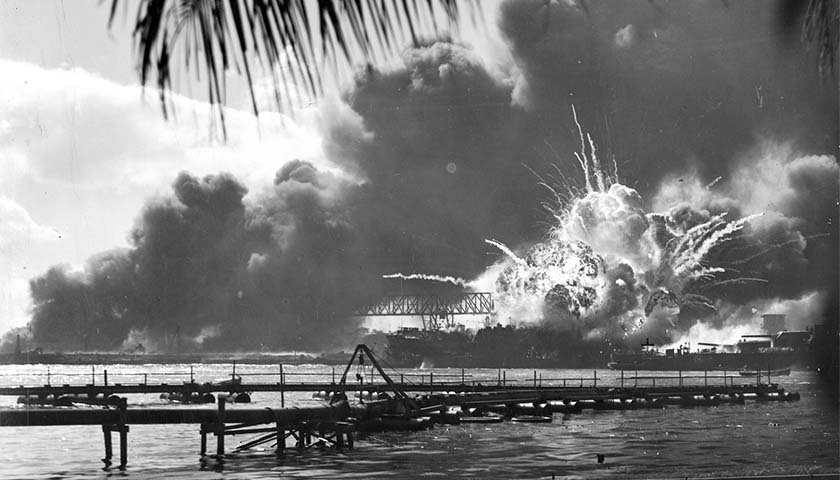

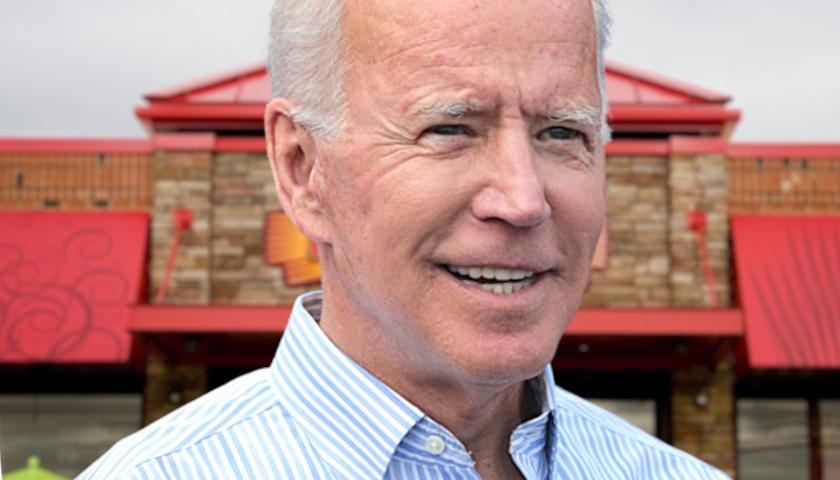

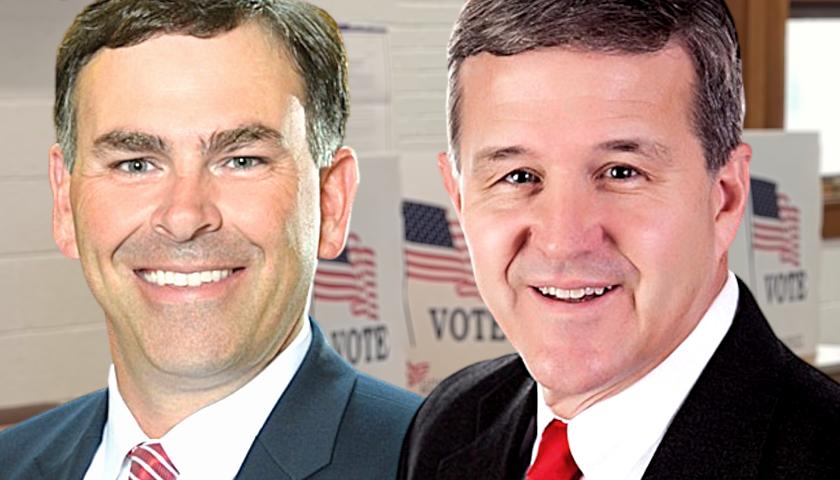
I have had the honor of visiting the Arizona Memorial. What a sobering experience. I will NEVER forget.
Victory! Compliments of “The Greatest Generation”.